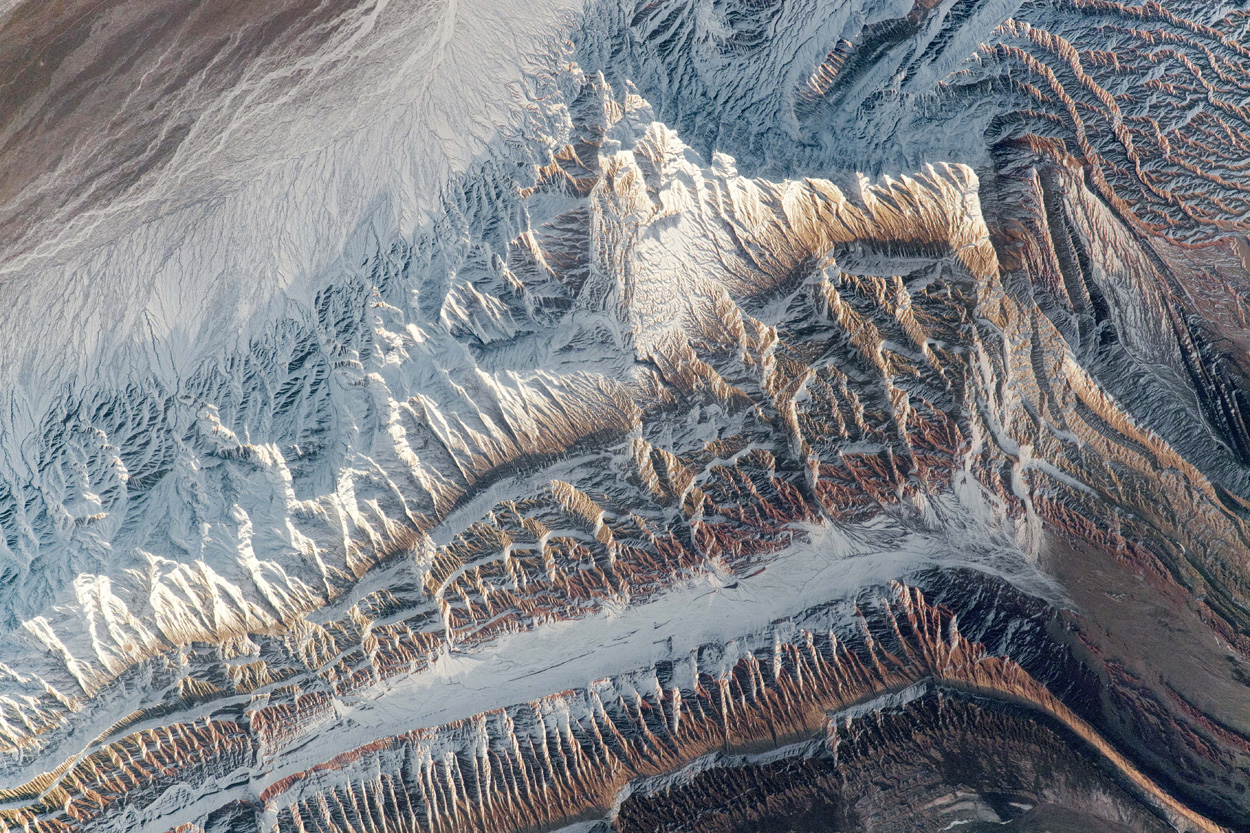
This image from the International Space Station shows China's Tien Shan Mountains covered in snow and ice.
The Tien Shan Mountains - Chinese for "heavenly mountains" - are one of the largest mountain ranges in the world at a length of 2,500 kilometers. It runs along the border between Kyrgyzstan and China. The section in the photo is in Xinjiang, China, between two other superlative landscapes: the Taklamakan Desert, the second-largest sandy desert in the world, and Lake Issyk-Kul, the second-largest high-mountain lake in the world.
Around 13,000 square kilometers of the Tien Shan slopes are covered by glaciers. Their meltwater is an important source of water for residents of the surrounding regions of China, Kazakhstan, Kyrgyzstan and Uzbekistan. Cotton farmers in north-west China are also particularly dependent on meltwater. The meltwater from the mountains compensates for the low rainfall of less than 20 centimeters per year on their cultivation areas and ensures that around 85 percent of all Chinese cotton can grow in this region.
But the water supply is at risk. Chinese farmers have now expanded the irrigated acreage so much that groundwater consumption has doubled. At the same time, the glaciers of the Tien Shan Mountains are receding due to climate change. Although more meltwater will initially flow in the summer than before, the glacier volume will nevertheless decrease in the long term and decimate the water reserves.